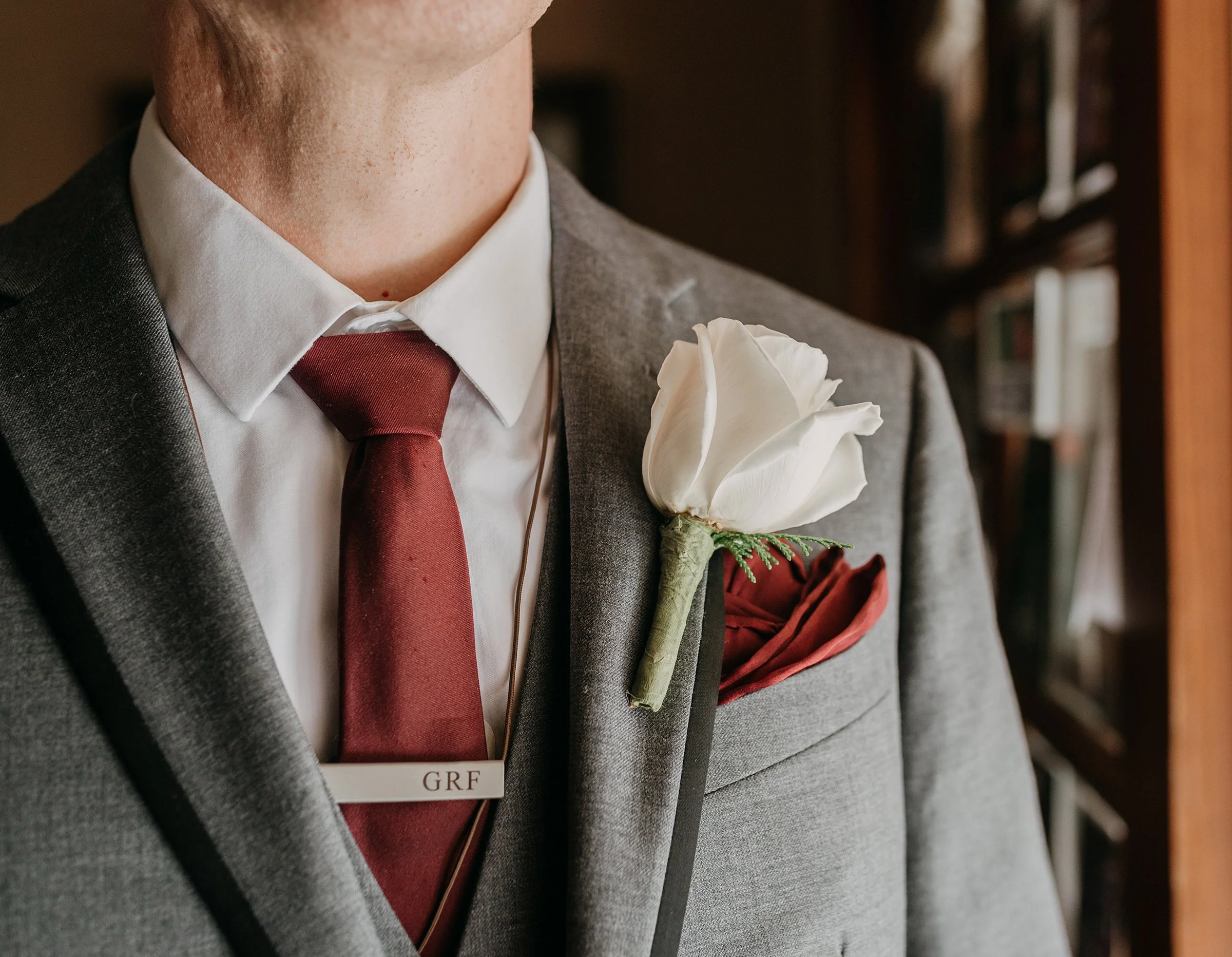Tips for Picking the Perfect Jewelry to Pair with a Custom Tuxedo
A custom-made tuxedo already sets a strong impression, but the right jewelry can define the entire look. Small details such as cufflinks, studs, or a bracelet can shift the tone from formal to refined. The right jewelry should match the tuxedo’s design, complement the wearer’s style, and maintain a balanced, polished look.
Each piece serves a purpose. Cufflinks and shirt studs add structure, while a sleek watch or subtle bracelet brings quiet confidence. The goal is not to overpower the tuxedo but to create harmony between fabric, metal, and personal taste.
This guide explains how to pair jewelry with a custom tuxedo so every detail feels intentional. It explores the principles behind choosing metals, matching accessories, and styling them for different events, helping anyone achieve a clean, cohesive finish.
Fundamental Principles for Pairing Jewelry with a Custom-Made Tuxedo
Jewelry should match the formality, color, and structure of a tuxedo. The right pieces create balance between subtlety and style, drawing attention without overpowering the tailored design.
Understanding Dress Codes and Formal OccasionsFormal events often dictate how much jewelry a person should wear. A black-tie event calls for simple, refined accessories, such as cufflinks, a wristwatch, or a discreet ring. For semi-formal occasions, a slim chain or minimalist bracelet can add personality without breaking etiquette.
A tuxedo tailored to fit precisely, such as custom-tailored tuxedos, already projects sophistication. Jewelry should support that impression rather than compete with it. For example, a sleek silver tie bar or understated studs can complement the clean lines of the jacket.
Each accessory must feel intentional. Overly bold designs or flashy stones can distract from the tuxedo’s structure. The goal is to maintain symmetry and respect the event’s tone while expressing individual taste.
Basic Jewelry Pieces for Tuxedo AttireCertain accessories remain timeless with formal wear. Cufflinks are important for French-cuff shirts and come in silver, gold, or black enamel. They keep the sleeves neat while adding a small accent of style. Studs can replace shirt buttons for a polished look that pairs well with a bow tie.
A watch should feature a slim case and a leather or metal band. Large or sporty designs appear out of place with formalwear. Rings should remain simple, such as a wedding band or a plain signet. For those who prefer a personal touch, a small bracelet in metal or leather can add texture.
Each piece should serve a purpose and remain proportional to the outfit. The fewer accessories worn, the more refined the look appears.
Color and Material Coordination for a Cohesive LookJewelry metals should align with the tuxedo’s fabric and color. Silver or white gold pairs best with black or navy tuxedos, while yellow gold complements warmer tones such as ivory or cream. Matching metals across rings, cufflinks, and watches creates a consistent appearance.
Gemstones or enamel accents should echo subtle details, like a pocket square or tie color. For example, onyx cufflinks work well with black lapels, while blue sapphire studs can highlight navy fabric. A consistent palette prevents visual clutter and keeps the focus on the tuxedo’s fit.
Texture also matters. Polished metals suit glossy lapels, whereas matte finishes fit wool or velvet jackets. Each choice should reflect the wearer’s personality while maintaining the tuxedo’s formal balance.
Selecting and Styling Jewelry Accessories for Tuxedo Ensembles
A custom-made tuxedo allows for personal touches that reflect style and confidence. Jewelry and accessories such as cufflinks, bracelets, rings, and lapel details add polish and balance to formalwear, especially for black-tie or cocktail events.
Choosing Cufflinks and Tie Clips for Formal ImpactCufflinks and tie clips give structure and refinement to a tuxedo. They add a polished finish that separates a formal outfit from a standard suit. Silver, gold, or black enamel cufflinks match most tuxedo fabrics, while gemstone accents create subtle contrast.
Cufflinks should align with the shirt’s cuff style. French cuffs pair best with classic bullet-back or whale-tail cufflinks. For a sleek look, plain metal designs work well for black-tie events, while engraved or textured ones suit cocktail parties.
A tie clip should sit between the third and fourth shirt buttons. It must hold the tie flat without drawing too much attention. A slim silver or matte black clip complements a bow tie or necktie without overpowering the tuxedo’s clean lines.
Wearing Bracelets and Rings with ConfidenceBracelets and rings express individuality without breaking formal balance. A single bracelet on the wrist opposite the watch adds symmetry. Metal or leather bands in neutral tones appear stylish yet understated. Avoid bulky or overly decorative designs that distract from the tuxedo’s sharp silhouette.
Rings should coordinate with cufflinks or a watch. A plain band or a ring with a small stone can look refined. For a more modern approach, men sometimes wear stacked rings in matching metals, though restraint keeps the look tasteful.
A tuxedo’s simplicity allows jewelry to stand out in subtle ways. Each piece should feel deliberate and cohesive rather than decorative. Confidence comes from balance—neither too little nor too much.
Incorporating Pocket Squares and Lapel DetailsA pocket square adds contrast and color to a tuxedo jacket. White silk remains the traditional choice for black-tie events, while patterned or colored squares fit cocktail settings. The fold should look neat and intentional, whether straight-edged or puffed.
Lapel details such as pins or small flowers provide a refined accent. A single lapel pin in silver or black metal can match cufflinks or rings. Boutonnières, often in white or red, bring a formal yet classic touch for weddings or galas.
The pocket square and lapel decoration should never compete for attention. Together, they create depth and character without breaking the tuxedo’s symmetry.
Finishing Touches: Dress Shoes and Patent Leather ShoesFootwear completes the tuxedo ensemble. Classic black dress shoes or patent leather shoes remain the most appropriate for formal wear. Patent leather provides a mirror-like shine that pairs well with satin lapels and bow ties.
Shoes should match the tone of the outfit—sleek, clean, and well-polished. Lace-up oxfords work best for black-tie events, while loafers can suit semi-formal occasions. Socks must be dark and long enough to maintain a continuous line from trouser to shoe.
Proper care keeps formal shoes looking sharp. Regular polishing, use of shoe trees, and soft cloth buffing preserve their shape and finish, adding the final touch to a well-styled tuxedo.
Conclusion
The right jewelry helps a custom-made tuxedo look polished and balanced. Each piece should match the tuxedo’s color, fabric, and style rather than compete with it. Subtle metals such as silver, platinum, or white gold often pair best with classic black or navy suits.
Small details make a strong impression. A sleek watch, simple cufflinks, or a discreet ring can express personal taste without drawing too much attention. Therefore, restraint often leads to a cleaner and more refined appearance.
Personal preference still matters. A custom tuxedo reflects individuality, so jewelry should do the same. Choosing timeless pieces that fit both the outfit and the occasion allows the wearer to appear confident and well-composed.




